Your Call?
Which near midair collision image do you feel is the strongest, Image #2, the 3X2 version, or Image #3, the square crop? Why did you make your choice?
The Last Blog Post
In the Top Ten Mega-Tuesday Adult Bald Eagles blog post here, my favorite of the ten all very excellent images was #9, Bald Eagle incoming flight pano crop. Not a single commenter mentioned that one. As noted in the post, I liked it best because it was created in the classic BIRDS AS ART style: clean, tight, and graphic with an out of focus blue background seemingly made in heaven. As the sun is low in the sky in Homer in winter, there is no such thing as “bad light” on a sunny day. The golden light just an hour before noon adds tremendously to the success of this image.
For me, the weakest image was #6: Bald Eagle taking flight as I was disappointed to lose the sun just as the bird took flight. The pose, however, was pretty neat.
What’s Up?
Though the weather in Homer, AK has been unseasonably cloudy and warm with day time temperatures in the low 40s Fahrenheit, the eagle photography has been excellent. That despite the complete lack of snow (after the first three days) and the absence of sunshine for all but about two hours on the last day of the first IPT.
Today is Sunday 23 February 2025. There is a dusting of snow on the ground and we are hoping for more before we sail at 8:45am Alaska time. Bob Sabin flies to Anchorage this afternoon. Brian (The Mailman) Bower drives back to Anchorage tomorrow in his rental vehicle at 11:00am. Steve Shore, Anita North, and I will be at least five hours ahead of him as my flight to Seattle was changed from after 5pm to 2:21pm. Ironically, we are expecting some snow on the ground over the mountain passes. A blizzard would be crippling but that is the risk you take when you opt to drive from Anchorage to Homer (and back). If I make my flight, I will land in Orlando at 5:48am on Tuesday.
Whatever you opt to do, we hope that you too choose to have a great day.
If an item — a Delkin flash card, or a tripod head — for example, that is available from B&H and/or Bedfords, is also available in the BAA Online Store, it would be great, and greatly appreciated, if you would opt to purchase from us. We will match any price. Please remember also to use my B&H affiliate links or to earn 3% cash back at Bedfords by using the BIRDSASART discount code at checkout for your major gear purchases. Doing either often earns you free guides and/or discounts. And always earns my great appreciation.
Supporting My Efforts Here
If you enjoy and learn from the blog, are all set for gear, or live overseas, consider leaving a BAA Blog Thank You Gift here.
If you enjoy and learn from the blog, please consider using one of my affiliate links when purchasing new gear. It will never cost you a single penny. To support my effort here, please order from B&H by beginning your search here. Or, click here, to order from Bedfords and enter the discount code BIRDSASART at checkout to receive 3% cash back to your credit card and enjoy free Second-Day Air Fed-Ex shipping. It is always best to write for advice via e-mail.
In many cases, I can help you save some serious dollars. And/or prevent you from purchasing the wrong gear from the wrong shop.
|
|
|
These two images were created on 20 February 2025 at Kachemak Bay, AK on Day 2 of the second 2025 Homer IPT. Standing on our eagle boat, I used the hand held Sony FE 300mm f/2.8 GM OSS Lens (Sony E) and The Latest Greatest Sony Flagship Body, the a1 II Mirrorless Camera. The exposure was determined via Zebras with ISO on the thumb dial. ISO 1600: 1/3200 sec. at f/2.8 (wide open) in Manual mode. RawDigger showed that the exposure was dead solid perfect: AWB at 10:35:51am on a cloudy-bright morning. Zone/AF-C with Bird Eye/Face Detection enabled performed perfectly. Click on the image to see a larger, sharper high resolution version. Image #1: Photo Mechanic composite of the two frames prior to the miracle |
I Do Remember _DSC5534
I do remember getting on an eagle flying right to left and then exhibiting a strange flight pose. In retrospect, we might call that one midair avoidance. And I do remember asking Steve Shore who was standing to my left, “Did you see that?” I had been referring to the unusual pose.
In the next frame, _DSC5534, I did not notice the bill and the leading edge the lower wing of the second eagle entering the frame from the left until I viewed the sequence on my laptop. Heck, I did not notice the second bird until after I saw the next frame. As below.
|
|
|
This image was created on 20 February 2025 at Kachemak Bay, AK on Day 2 of the second 2025 Homer IPT. Standing on our eagle boat, I used the hand held Sony FE 300mm f/2.8 GM OSS Lens (Sony E) and The Latest Greatest Sony Flagship Body, the a1 II Mirrorless Camera. The exposure was determined via Zebras with ISO on the thumb dial. ISO 1600: 1/3200 sec. at f/2.8 (wide open) in Manual mode. RawDigger showed that the exposure was dead solid perfect: AWB at 10:35:51am on a cloudy-bright morning. Zone/AF-C with Bird Eye/Face Detection enabled performed perfectly. Click on the image to see a larger, sharper high resolution version. Image #2: Bald Eagles adults — near midair collision A |
No Memory of the Next Two Frames
When the next two frames in the sequence popped up on my laptop, I was totally shocked as I had no memory of seeing two eagles in the viewfinder. I just followed through with the shutter button depressed. I do remember that a few minutes later, Anita North and Robert Sabine were excited about an image on the back of Bob’s camera. It turned out to be the exact instant of my next frame in the sequence, Image #3 below.
As I was panning right to left there was some motion blur on the head of the bird on the left. I brought the image into Topaz Sharpen AI and painted a mask of the head of the left hand bird. Topaz suggested Out of Focus Normal but I disagreed and opted instead for Motion Blur (reduced to 85%). Curious, we compared the two and the results with Motion Blur were clearly far superior. I find that Topaz Sharpen often fails to note motion blur with the automated settings.
|
|
|
This image was created on 20 February 2025 at Kachemak Bay, AK on Day 2 of the second 2025 Homer IPT. Standing on our eagle boat, I used the hand held Sony FE 300mm f/2.8 GM OSS Lens (Sony E) and The Latest Greatest Sony Flagship Body, the a1 II Mirrorless Camera. The exposure was determined via Zebras with ISO on the thumb dial. ISO 1600: 1/3200 sec. at f/2.8 (wide open) in Manual mode. RawDigger showed that the exposure was dead solid perfect: AWB at 10:35:51am on a cloudy-bright morning. Zone/AF-C with Bird Eye/Face Detection enabled performed perfectly. Click on the image to see a larger, sharper high resolution version. Image #3: Bald Eagles adults — near midair collision B |
Both Faces Sharp
So, the question is, Why were the faces and eyes of both eagles in focus? The obvious answer, in part, is that the two birds were close to being on the same plane. More importantly, estimating the distance to the action at about 100 feet, the total depth of field at 300mm and f/2.8 is 5.7 feet, more than enough to cover both birds in the given poses. Things got messy after that. The next frame I kept was five frames later, _DSC1561. That one showed, as you might surmise when looking carefully at Image #3, that the bird on our left, the one with its feet outstretched, was farther away than the bird on our right. In 1561, you can clearly see that the bird on our left passed well behind the bird on our right. A collision was avoided.
The Donor Bill Tip
Because of motion blur, the bill tip of the speeding bird on our left in Image #2 was severely distorted, pretty much invisible. As the bird on our left slowed down a bit in Image #2, the tip of its bill was rendered far more sharply. I created a tiny Quick Mask of the bill tip from the first image, brought it onto the second image using the Move Tool (V). After putting the selection roughly into place I rotated it using the Transform Tool, re-shaped it using the Warp command, positioned it perfectly, and — working quite large, added a Regular Layer Mask to paint away the slightly darker sky. Bingo!
|
|
The BIRDS AS ART Current Workflow e-Guide (Digital Basics II).You can order your copy from the BAA Online Store here, by sending a PayPal for $40 here, or by calling Jim or Jennifer weekdays at 863-692-0906 with your credit card in hand. Be sure to specify Digital Basics II. |
The BIRDS AS ART Current Workflow e-Guide (Digital Basics II)
The techniques mentioned above and tons more great Photoshop tips and techniques — along with my complete digital workflow, Digital Eye Doctor Techniques, and all my personalized Keyboard Shortcuts — are covered in detail in the BIRDS AS ART Current Workflow e-Guide (Digital Basics II), an instructional PDF that is sent via e-mail. Note: folks working on a PC and/or those who do not want to miss anything Photoshop may wish to purchase the original Digital Basics along with DB II while saving $15 by clicking here to buy the DB Bundle.
Please note: the Divide and Conquer technique was inadvertently omitted from DB II. It is detailed in a free excerpt in the blog post here.
Folks who learn well by following along rather than by reading can check out the complete collection of MP 4 Photoshop Tutorial Videos by clicking here. Note: most of the videos are now priced at an amazingly low $5.00 each.
You can learn how and why I converted all of my Canon digital RAW files in DPP 4 in the DPP 4 RAW Conversion Guide here. More recently, I became proficient at converting my Nikon RAW (NEF) files in Adobe Camera Raw. About three years ago I began converting my Nikon and Sony RAW files in Capture One and did that for two years. You can learn more about Capture One in the Capture One Pro 12 Simplified MP4 Video here. The next step would be to get a copy of Arash Hazeghi’s “The Nikon Photographers’ Guide to Phase One Capture One Pro e-Guide” in the blog post here. Today, I convert my Sony raw files in Photoshop with Adobe Camera Raw.
You can learn advanced Quick Masking and advanced Layer Masking techniques in APTATS I & II. You can save $15 by purchasing the pair.
|
|
The Digital Basics III Video Series |
The Digital Basics III Video Series
I realized two years ago that my digital workflow had changed significantly and was toying with the idea of writing a Digital Basics III. More recently, I learned and begun working with two great new Photoshop Tools, the Remove Tool and the Luminance Targeted Adjustment Tool. The former is like a smarter Spot Healing Brush Tool on steroids and the latter is a step up from the fabulous Color Mixer Tool. During that same time frame, I came up with a new and improved 2-step noise reduction technique. I still use Divide and Conquer, Quick Masks, Layer Masks, an expanded array of personalized keyboard shortcuts, and tons of other stuff from both versions of Digital Basics.
As soon as I realized that I did not want to take on another large writing project, I realized that by creating a series of videos I could much more easily share all the details of my current digital workflow and much more easily incorporate additional new tips, techniques, and tools as I went. And so, The Digital Basics III Video Series was born.
You can order your copy here. The videos will be most valuable for folks using the latest version of Photoshop (2024) or Lightroom along with Topaz DeNoise AI and Topaz Sharpen AI.
Typos
With all blog posts, feel free to e-mail or to leave a comment regarding any typos or errors.

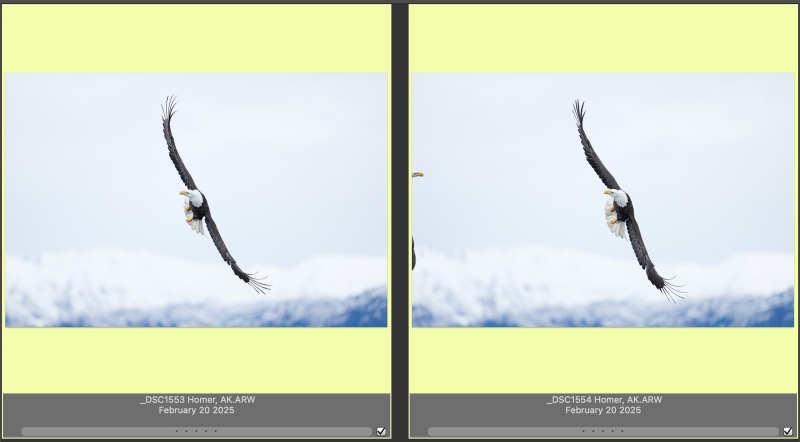
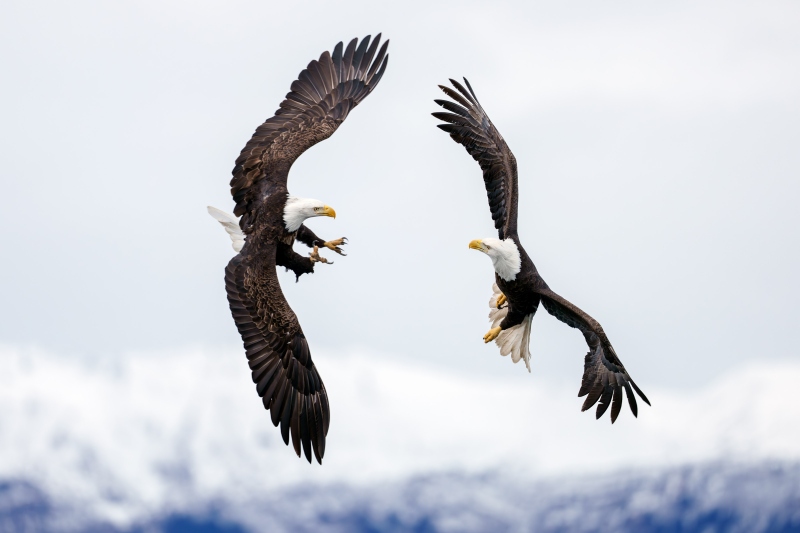
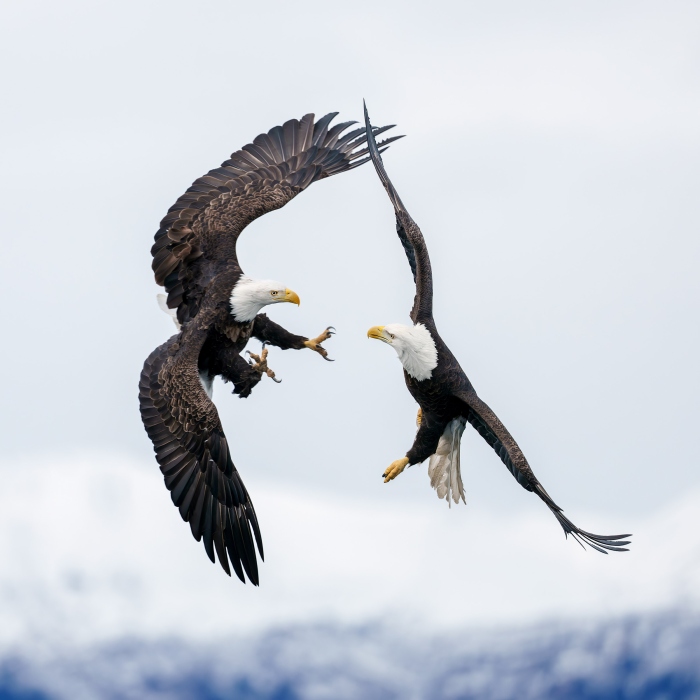
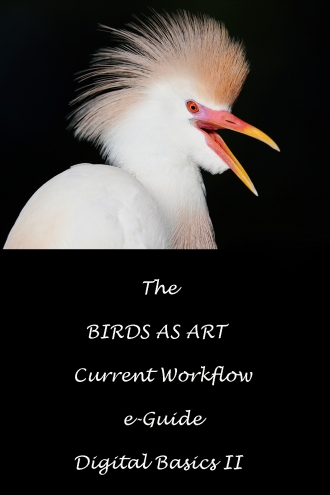
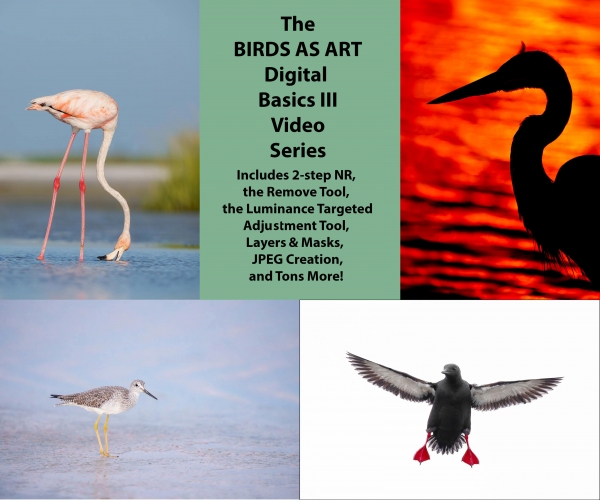






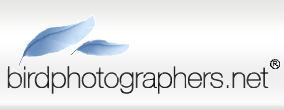


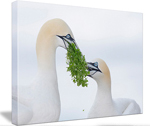



I like Image #2. Like the crop, the background and of course the action.
I like mid-air Collisiioin A because it shows more detail on each eagle — the spread of the primaries and all four talons in play. Plus, that photo adds a broader look at background. Though blurred, the snow-covered mountains add wind-chill blowing in from genuine wild country.
I thought #3 was so much more intense!
I prefer Image 2, it holds more interest for me. Whilst I appreciate, and can and do admire the degree of light, the clean, tight, blurred background and sharpness of an image, which seem to be your prime targets, I would rather a closer action shot of the subject, or the position of the bird in the frame, or an unusual pose…. If all the other aspects come together too, then that’s just a bonus!
Hi, Artie. I’m fascinated that your favorite of the ten images in yesterday’s post was #9. I’d happily have kept that image if it were mine, but along with all the other commenters, it was not my favorite. I’ve seen that with my own images; sometimes people don’t love the one I love. It might be interesting to discuss that some time. Today’s is a tough call for me. Both are great. I prefer the wing position and overall pose of the bird on the left in the first image, and I prefer the increased drama created by the two birds being closer to each other in the second. These images made me go back and look at mine from last year. The opportunities we got to make countless wonderful images were beyond spectacular.